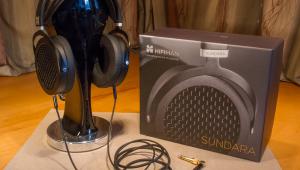| Columns Retired Columns & Blogs |
First time I've ever seen the word in use, it conjures up a Judge in the Old Bailey Courthouse dressing down our wonderful Rumpole.
A nice visual "mind's eye" image of Disdainful & Supercilious !
Thanks for reminding me of Shure, again.
Tony in Michigan
ps. I tried to make Shure as Schiit work but can't quite do it. I'll settle for Shure & Schiit . ( + Etymotive )







































